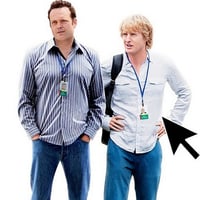(Re-post - Recovering from #shrm13 - great time!)
Every Kinda People
Last week was #SHRM18. The annual gathering of human resources pros to experience the latest and greatest in tech, compliance and best practices. It’s usually a good time of rah-rah, parties, cool speakers and local experiences. Chicago was our host this year and it did not disappoint.
With the rampant advent of HR groups on SoMe over the last 5-8 years, it’s also a chance for people to meet each other IRL (in real life…in case you don’t speak acronym). It’s truly remarkable to see people catch up who have “known” each other online but have never been in each other’s physical company. The genuine joy and love are palpable. Meeting each other in person solidifies the relationship that’s already been defined by ideals, thoughts, perspectives and truths shared through the online vehicle.
During the SHRM Conference, Mary Faulkner from Denver Water encouraged HR folks to get out of their office and “mix and mingle” during her presentation. And while this advice is spot on, I found it to be applicable to a consideration around diversity and inclusion. It’s a physical commitment, but also a mental one. Our ideals and thoughts might have validity, but are we willing to mix and mingle with others’ considerations? Listening and considering does not mean that everyone will agree, but it does mean that we will understand deeper why we think what we think. And for those opinions that are challenged and changed, isn’t that a great mark of inclusive thought? We have not cornered the market on finalized thoughts and considerations. Convictions are one thing, but exposure is another.
Herein lies part of the answer to our diversity and inclusion problem at work. When we first meet our co-workers, teammates and managers, it’s in person. We do the scan up and down (don’t say you don’t, you do) and our brains categorize this person. We base on those visual cues – dress, grooming, style, looks. Subconsciously, we label and we presume. Understand that it’s not necessarily negative, but we do it without much conscious thought.
Moving forward, any of those thoughts, perspectives and ideas that this person shares are filtered through that lens. We take more or less seriously those words, and we take action, if any, accordingly. And despite having a variety of people groups in our organizations, we don’t necessarily approach each other bias-free. We see, we categorize and we assume. Diversity of type does not mean diversity of thought. We may then back away from opportunities to be exposed to different thinking and process considerations.
While I am aware of the ability to read feeds for an individual on SoMe outlets, it is different than having the person directly in front of you from the start. Our relationship is based upon what they share, present and believe. There is no real distraction based on physical appearance or assumed financial status. And though I may not agree with the full perspective presented, very rarely am I left feeling as though I am belittling them in my mind. Usually our negative perspectives come from what we hear in light of what we see in person. We don’t have that same encumbrance online.
Each of us can consider the perspective of another. We can dialogue about the influences that have led us to where we are today. We can appreciate the path of others more. And our diversity of numbers becomes more about its intended diversity of approach and experience. And our openness to the variety of representation strengthens the likelihood that we’ll really hear a wider perspective.
Understand that the challenge isn’t to only be friends with people online (heaven forbid!), but to take some of the best we have acclimated to in our rapport development and apply it to another collaborative and relational outlet. Our workplaces are not only ideal for this type of engagement, but our companies need the business advantage of diverse and inclusive thought and application. As Mary said, mix and mingle.




Blog comments